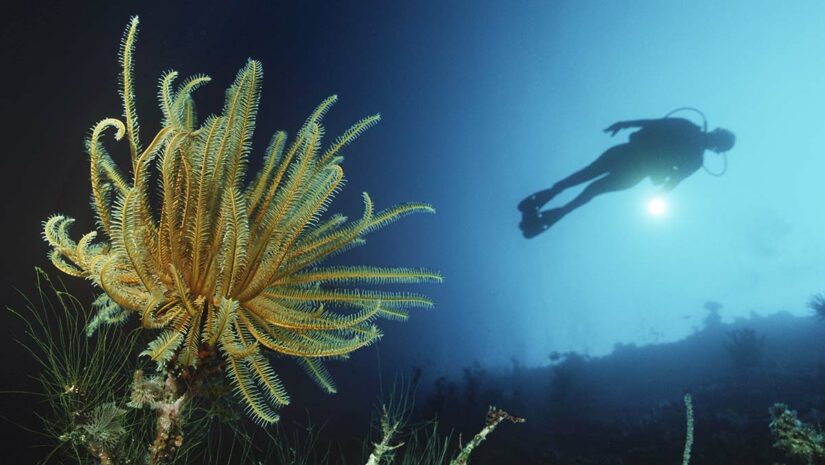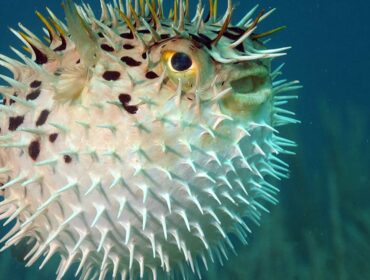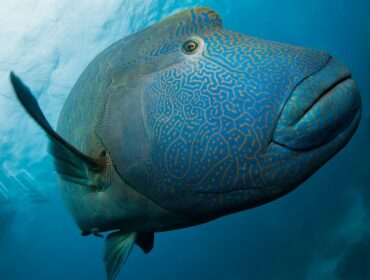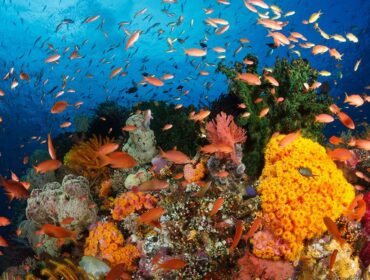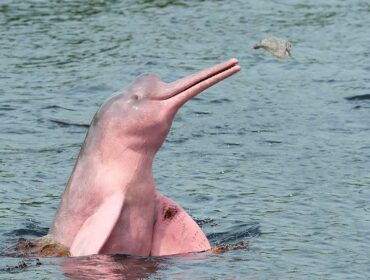One of the more fascinating groups of animals under the sea is the echinoderms. This diverse group includes many different animals you might not think would be related based on their appearance, like sea cucumbers, urchins, brittle stars, sand dollars, starfish, and most relevant to this article, the feather star.
What is a feather star?
The feather star, also popularly known as a sea lily, belongs to Crinoid species of the Echinoderm family which comprise of starfish, sea urchins, brittle stars and sea cucumbers. The word “crinoid” or “crinoidea” comes from the Greek word krinon, which means “a lily”, and eidos, meaning “form” which perfectly describes the sea lilies. While some crinoids are characterized by a stalk that anchors them to a fixed structure, like rock or coral, feather stars have more of a root ball than a stalk, allowing them freedom of movement on the reef and through the water column, each arm moving in a graceful locomotion as it travels.
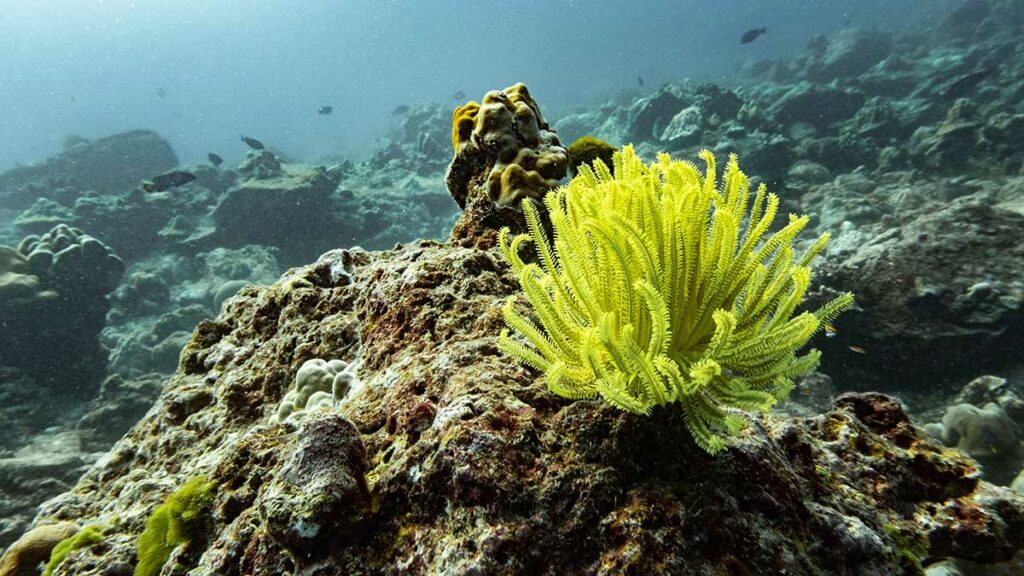
The life of a feather star
Characteristics
Feather stars are typically characterized by a narrow cup or tube shaped body from which as many as five to 200 feathery arms spring from. These arms called pinnules, are coated with a sticky substance that helps the feather star catch food. Their feet comprise of a disc-like sucker, which, in some species, has root-like structures that further increase its grip on the underlying surface. The stalk is often lined by small cirri with which they cling to to sponges or corals. Both the mouth and the anus of the feather star are centrally located at the top of the animal. Food is passed down to its mouth using the feathery arms. These creatures come in a great range of colors including some bright yellows and reds perhaps to ward off predators mistaking them to be poisonous.
Body composition
The stem, the calyx, and the arms are three main sections of a crinoid. Connected by thin ligamentary tissue, these parts of the body often regenerate to maintain an inner layer of protection. Feather stars are known for being self sufficient. Their bodies have evolved over time to decompose and recuperate when necessary.
Just as the name implies, the feather star is wispy and delicate, with curling tendrils that flutter and sway in the current. These tendrils are actually arms that extend out of its small body frame, looking rather similar to the plumes of some birds.
Habitat
There are approximately 625 different species of feather stars, and are found in almost all the oceans and at all depths. They are found in the tropics, temperate and polar zones often found sheltering by day under coral ledges or overhangs with their feathers rolled up. When night falls, these filter feeders migrate to the top of the reef and extend their arms into the currents where they trap fine particles and planktonic food using their net-like arms.
During the daylight hours, they can be found beneath coral ledges or hiding in dark crevices of underwater caves. When darkness begins to fall, however, these animals come out from the shadows and move toward the reef, where they extend their feathery arms into the current to feed.
These types of sea creatures can be found in oceans all around the world. However, they’ll be most likely seen in the waters of the Indo-West Pacific region. Divers can certainly look for feather stars during the day, but a night dive will produce the real show as they make their way to shallower waters to feed. The color of feather stars ranges from bright red to vibrant yellow. Although they display the typical five-fold symmetry of their starfish brethren, feather stars typically have a great deal more than five arms, which makes them easier to spot at night.
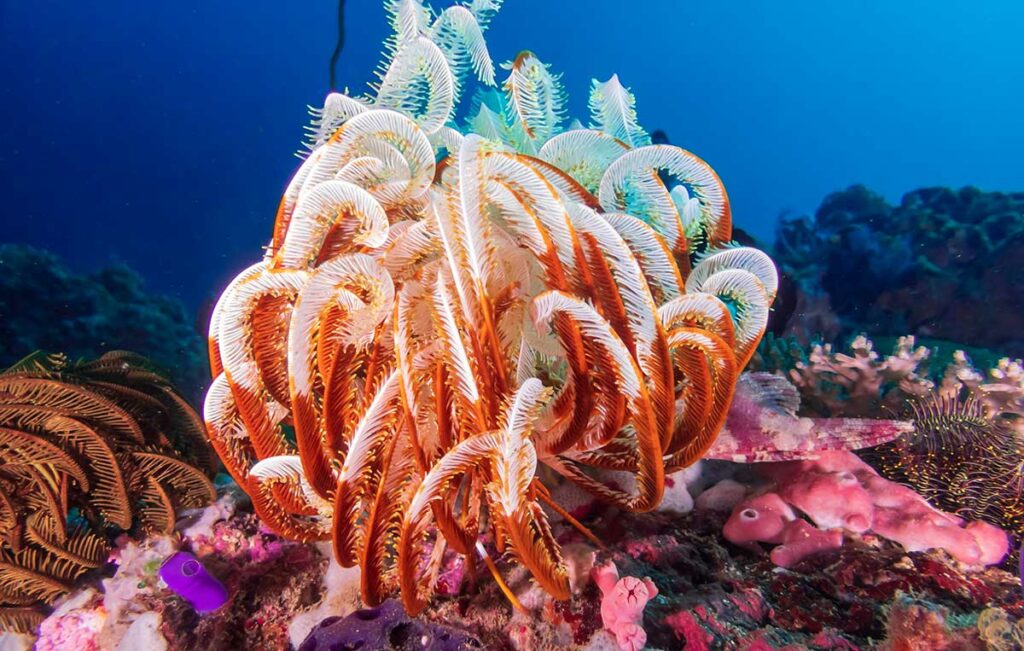
Diet
These animals are suspension feeders, trapping small particles with their mucous-tipped tube feet before routing them through a complex series of grooves and into the mouth on the central disk. They feed for several hours daily and in such copious amounts that they are difficult to maintain in captivity, requiring continuous high concentrations of the correct types of plankton in order to survive.
The bulk of the feather star’s nutrition comes from living things, though they do trap and consume non-living organic particles and plant material, such as diatoms. These organisms have a demonstrated nutritional need for zooplankton, both in the form of foraminifers, or marine protozoa, and small or larval mollusks and crustaceans. Although they might technically be considered omnivorous, captive experiments have shown that feather stars extract approximately 80 percent of their energy from invertebrate larva, placing them firmly into the realm of carnivores.
Because feather stars do not have an official stomach, consumables cycle through their body in waves while still providing nutrition. Crinoids produce waste that quickly dissolves into nearby corral or rocks.
Speed
Without a stalk, they are able to move ever so slightly across the sea floor. Using modern technology, researchers have recorded feather stars moving at up to 5 centimeters per second. Although this might not seem like an incredible speed, it is essential for their health and survivability. Their speed primarily depends on gender, native tendencies, and vicinity of predators.
Life cycle
These marine animals reproduce every 10-16 months. Reproduction consists of a larval stage, free swimming period, and pinnule stage. Male and female creatures often live in different habitats, which makes breeding periods unique to the colony. Natural events are particularly dangerous to the species, as their life cycles depend on strict timeframes. If a mating season is disrupted, the nearby population could be in jeopardy.
Fossils
Feather stars are well known for attaching to floating driftwood and decaying over time. This process creates hardened fossils that then move along gentle currents underwater. Researchers have used these fossils to locate areas with high population densities of crinoids.
Spotting a feather star
Most divers assume that feather stars are fixed to the surface they are attached to. However, these creatures can crawl, roll, walk and even swim but mostly they cling to sponges or corals. Spotting a feather star swim free is a fascinating sight that one seldom sees but is beautiful to behold. Also since being nocturnal creatures, during the daytime, feather stars roll up their arms and shelter. One needs to observe them on a night dive to see them in action in their fully extended glory.
Since there are so many species of feather stars, and in so many different colors and forms, they make a prize subject for underwater photographers and underwater naturalists alike.
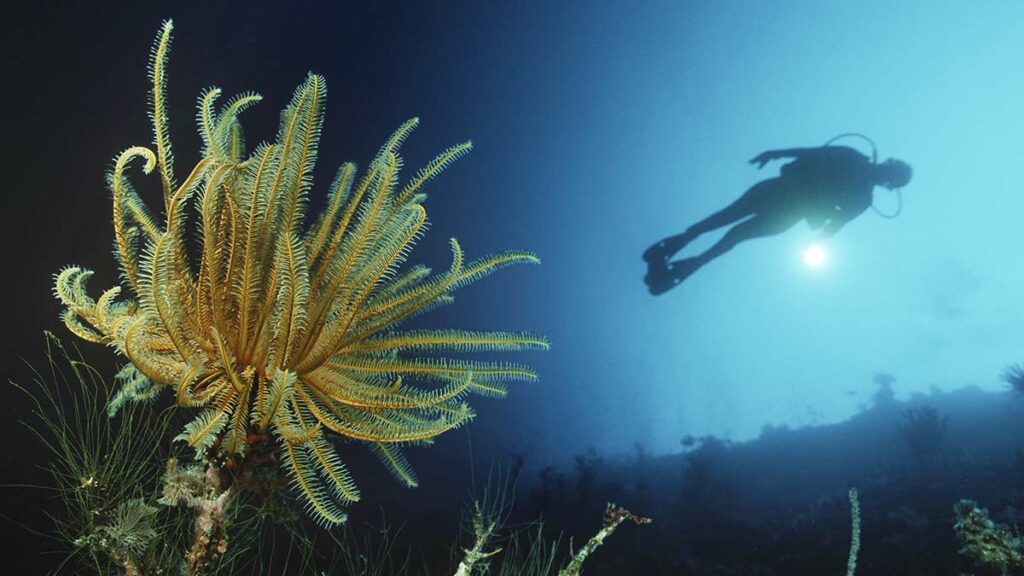
Species of feather stars
Here are five of the most beautiful species from around the world.
Rosy Feather Star
The species Antedon bifida, known as the Rosy Feather Star, occurs most frequently between Scotland and Portugal. It prefers to grow between the low tide mark and 650 feet. It clings to rocks, mollusks, and seaweed but moves from place to place often. True to its name, this feather star is a lovely pinkish color, and its arms resemble ferns.
Promachocrinus Kerguelensis
The Promachocrinus kerguelensis is an Antarctic species named for the expedition that discovered it, the Challenger expedition of 1972-76. It prefers cold waters and is one of many to live in the frigid Antarctic climate. This species, however, is the only Antarctic feather star with 10 rays at the base of the arms. This makes them look denser and more feathery than other crinoids.
Antedon Petasus
Antedon petasus lives in the coastal areas between Scandinavia and Britain. It typically occurs at depths between 65 and 330 feet. It clings to rocks, boulders, kelp, and other invertebrates and prefers to stand in a strong current. The beauty of this feather star comes from its coloration, which is red, brown, orange, and white. It often appears striped.
Comaster Nobilis
The range of the Comaster nobilis is quite broad, occurring throughout the Indo-Pacific. Its cup-shaped body has 35-40 arms. Usually it has a gorgeous yellow coloration and may include speckles of black, green, and white.
Oxycomanthus Bennetti
The Oxycomanthus bennetti feather stars occur most often in the Bay of Bengal but also exist elsewhere in the Indian Ocean and surrounding areas. They prefer a depth of 160 feet or less and enjoy strong currents. While its color can vary, it is often purple, and it is typically dome-shaped.

